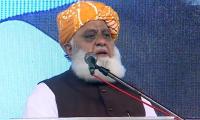The government of Pakistan is into each and every aspect of Pakistani life. The government of Pakistan buys almost all the electricity that is generated in Pakistan. The government of Pakistan runs 10 electricity distribution companies and six electricity generation companies. You want an electricity connection, you have to go to the government. You need a gas connection, you have to go to the government. The government of Pakistan runs 17 banking entities, seven insurance companies and nine Development Finance Institutions (DFIs). The government of Pakistan runs four aviation companies, 23 ports and shipping entities, three trading companies, five chemical companies and 15 engineering entities. The government of Pakistan also runs ‘promotion and advocacy’ companies.
Dr Nadeem ul Haque, vice chancellor Pakistan Institute of Development Economics (PIDE), undertook a study titled ‘Estimating the footprint of government on the economy’. Conclusion: “[the] government’s footprint on the economy in Pakistan is more than what annual general government spending (22 percent of GDP) suggests. In addition to spending; about 200 State Owned Entities, SROs culture and cumbersome business regulations combine towards a footprint of the government amounting to approximately 67 percent of Pakistan’s economy.”
The business-friendly PML(N)-led government is trying really hard to stimulate the economy. Will the PML-N succeed? To be sure, “government footprint is the key barrier to economic growth.” As long as the government of Pakistan continues to ‘crowd out’ the private sector, Pakistan’s economic growth will remain anemic at best. And, anemic growth means a high rate of unemployment.
Lo and behold, the size of a government and the incidence of corruption also have a deep, deep connection. An empirical study at the University of California concluded that “a larger government involvement in private markets today will be followed in future by a higher level of corruption.” To be sure, corruption has a negative impact on economic activity.
Pakistan’s economy used to be a high growth, low inflation economy. No more. We have now become low growth, high inflation. In 1970, our GDP grew by a wholesome 11 per cent. In 1997 and then in 2010, GDP growth grew by a meager 1 percent and 1.6 percent, respectively.
A government footprint of 67 per cent will not let any political party succeed on the economic front. The only way out is privatization and deregulation. Privatization in order to maximize output. Privatization to reduce government expenditures. There’s no way out but to “transfer financial and operating control” of all the state-owned enterprises to the private sector.
Imagine: the government of Pakistan is in the wheat sector, sugar sector, petroleum, fertilizer, automobile and the power sector. Imagine: there are some three-dozen government departments and agencies that give out NOCs, grant licences, order audits and issue permits. No wonder our economic growth is anemic.
Yes, the telecommunication sector was deregulated in the early-2000. Look at the successes of the telecommunication sector: teledensity is now at 88 per cent compared to four per cent in 2003; cellular rates are one of the cheapest in the world; since deregulation the sector has attracted $15 billion worth of foreign investment and telecom revenues have hit a new high of Rs644 billion.
Let’s learn from the deregulation of the telecom sector – and deregulate wheat, petroleum, sugar, fertilizer, automobiles and power. Eliminate restrictions, stimulate growth. And then, begin to count all the economic and social benefits.
The writer is a columnist based in Islamabad. He tweets @saleemfarrukh and can be reached at: farrukh15@hotmail.com
The National Electric Power Regulatory Authority headquarters can be seen in this picture released on November 4,...
Chinese President Xi Jinping and US President Joe Biden meet at the G20 leaders’ summit in Nusa Dua. — AFP/FileA...
Over the past few years, we have witnessed a complex and dynamic interplay between soft power and nation branding that...
A representational image showing the emission of gases by burning fossil fuels in an oil exploration facility. —...
Ukrainian soldiers ride on an armored vehicle in Novostepanivka, Kharkiv region on September 19, 2022. — AFPRising...
A representational image showing a man holding national flag as he walks along a street in Islamabad. — AFP/FileThe...







